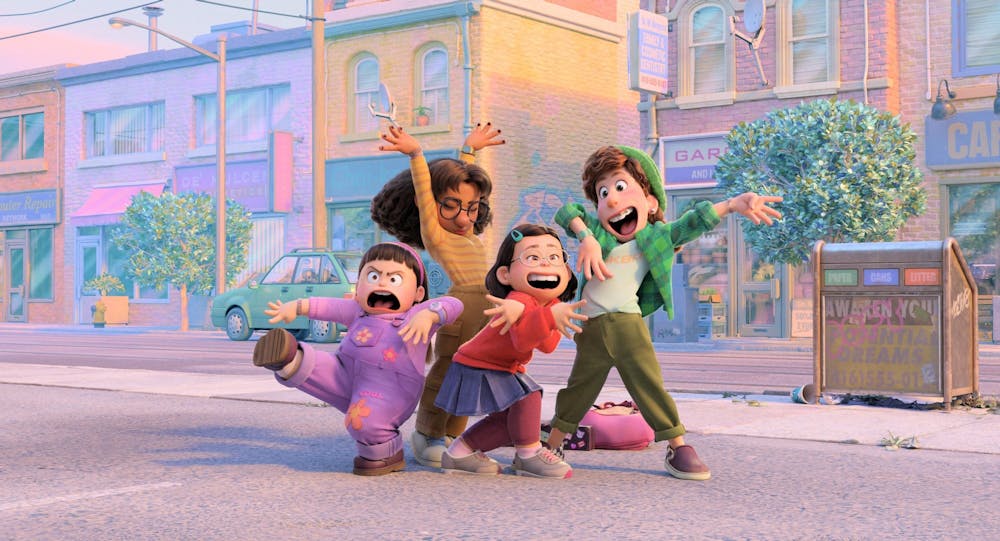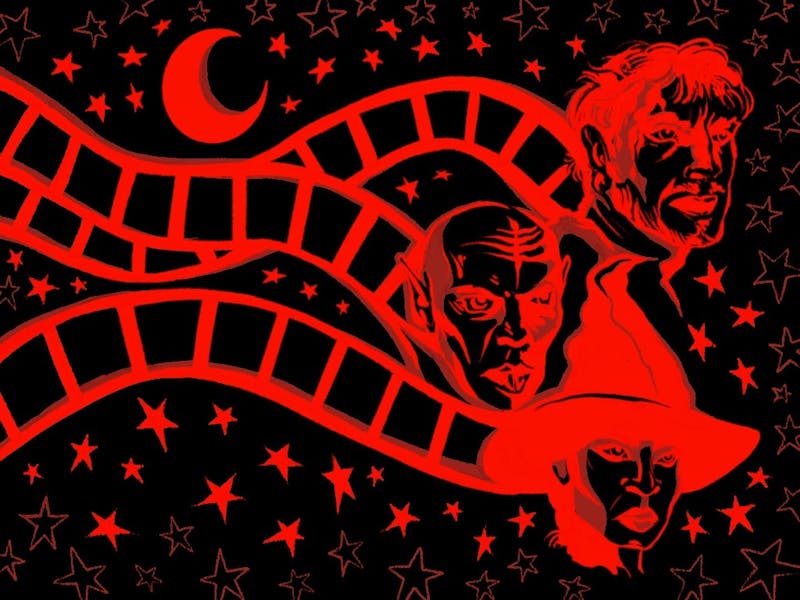Presented through the imagery of a young thirteen-year-old girl suddenly transforming into a giant red panda anytime she feels strong emotions, Pixar has developed a brand new narrative in “Turning Red” that explores a topic which audiences have not seen presented in animated films in as vibrant a fashion as this: Puberty. The main character, Meilin (Mei) Lee is torn between exploring a real teenage lifestyle with her friend or honoring her mother. The film does an excellent job of exhibiting Mei’s utmost respect and love for her mom while also revealing the desires she has for boy bands, crushes and having close friends. While putting the mind of a developing thirteen-year-old girl at the forefront is a prodigious action taken by the animated film industry, there are several other refreshing themes throughout “Turning Red” that are worth the recognition.
Let’s dig deeper into what the giant red panda is symbolizing for Mei Lee, something she believed to be a blessing and a form of protection from her ancestors. The day she wakes up as a ten-foot-tall, fluffy, red panda, it's unveiled as an allegory for her becoming a teenager. From the get-go, her mother, Ming, immediately assumes that she got her first period before seeing the reality of the situation. Her mother is what some may call a “helicopter parent” and is constantly taking control of Mei’s lifestyle. It isn’t until after that fateful morning that Mei finally expresses a new apprehension about how her mom treats her. For the first time in her life, Mei is experiencing intense emotions, such as anger, lust and sadness. The director, Domee Shi told Lifehacker.com journalist Lauren Rouse, “[Mei] getting her period, her going down a lusty drawing spiral, her discovering boys and crushes and making mistakes and fighting with her mum. All these are so essential in telling this kind of story, it just felt like we had to put it in there.” Through the help of her best friends, she is given support from people who understand her, allowing her to control the panda within her.
This film takes a deep dive into diversity as we have never seen before in an animated cinema, making it realistic and inclusive to audiences around the globe. The characters presented in this movie and their representation of people of color, as well as the LGBTQ+ community, can be easily described as a breakthrough for Disney and Pixar but is also a major criticism.
"Turning Red" so effortlessly presents a completely natural experience in a realistic setting that it almost forces the question of "What took so long?" Some critics will say that diversity in the film is forced, but considering the setting, time period and reality of our society, some will say the complete opposite. The film takes place in Toronto, Ontario, Canada, which is “recognized by the United Nations and BBC as the most diverse city in the world,” according to the Study Abroad Foundation. The Lee family runs the oldest Chinese temple in the city, and the narrative truly explores their ancestral roots, especially with how it ties into Mei's coming-of-age experience. People of color are at the forefront of the film: Mei and her family, her community, her friend group, her classmates and even the boyband she's obsessed with, 4-Town (Why are there five of them?). People online have raved on how much they can relate to her character, how they once were their mother's perfect Asian daughter, and then puberty changed all of that. What separates Mei and Ming's relationship on-screen from that of Western coming-of-age stories is how she loves her mother and wants nothing but to please her. Usually, we see estranged relationships in media between a teen and their parents, where "the parent is this militant obstacle from the very beginning and the kid wants to break free and be rebellious" Shi said.
Inclusivity comes out in an abundance of ways throughout the film. Mei's three best friends come from different ethnic backgrounds while simultaneously withholding unique personalities, styles and demeanors. People have come forward saying that her friends and other characters in the film are queer-coded, to which Domee Shi responds, "I think on the topic of puberty and adolescence it was important to talk about kids, and Mei’s friends, who are experiencing these emotions for people of the opposite sex or the same sex." The depiction of these middle schoolers, despite what people online have to say, is accurate and representative of young teenagers these days: outspoken, angsty, lustful, confused, cringy and goofy. Regardless of these girls' sexual orientation, ethnicity or skin color, what matters most is the friendship the four of them share. Their bond is an incredibly powerful plot point that drives the narrative of the film, teaching the audience how strong friendships can overcome any tribulation. It is important to have a representation of friendships like this so that children of that age watching the film can understand how to treat one another and analyze what caring friendships look like.
"Turning Red" set a precedent for representation in animated films. While other Pixar movies have notably been identified for highlighting people of color ("Soul") and queer-coded characters ("Luca"), this film specifically does all of that effortlessly. Hopes are high that Pixar, Disney and other animation studios can keep films like this coming as it feels like a new beginning for animated story-telling, allowing people from all walks of life to see themselves in movies like these.



